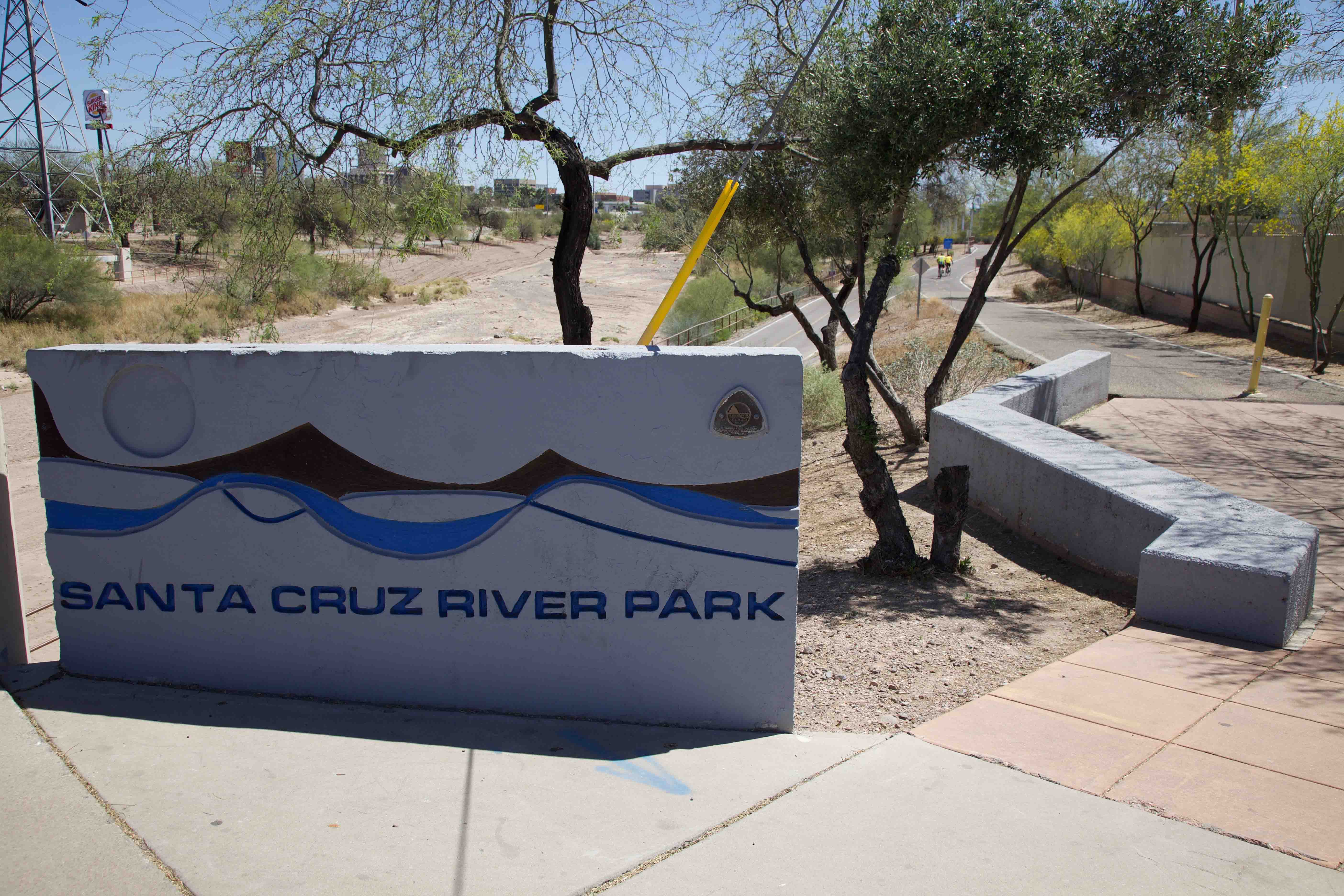 At the St. Mary's Road access to The Loop at the Santa Cruz River Park.
At the St. Mary's Road access to The Loop at the Santa Cruz River Park. For the last several months, Luke Cole has spent time counting every piece of trash in a roughly 30 by 30-foot square up and down the Santa Cruz riverbed. He's not doing it alone: Cole, associate director for resilient communities and watersheds at the Sonoran Institute, has been leading a team of volunteers.
The surveys are collecting long-term data about how much trash accumulates in the riverbed and where it's coming from. Cole said they've already got some preliminary findings:
"About 50% of the trash we're seeing is from food packaging. And a lot of that is styrofoam cups," he said. "Styrofoam is really long-lived and it breaks down into small, small pieces, as do these single-use plastic bags."
Cole said they've started finding more microplastics in the stomach tissue of animals that live along the river. The trash surveys also encounter a lot of single-use plastic bags and clothing.
Identifying the source of trash can be complicated, he said, because when washes flow, they carry trash with them from different places down to the Santa Cruz. But he's hoping his research will help address the trash at its source to reduce the amount ending up in the river.
"The more data we can gather, the more we can address the various potential sources to say, 'hey, we could really use your help,'" Cole said.
The effort also ties in with a collaboration between the Sonoran Institute and Pima County Regional Flood Control District to gather public input on projects to further improve the river, which includes efforts to reduce trash.

By submitting your comments, you hereby give AZPM the right to post your comments and potentially use them in any other form of media operated by this institution.